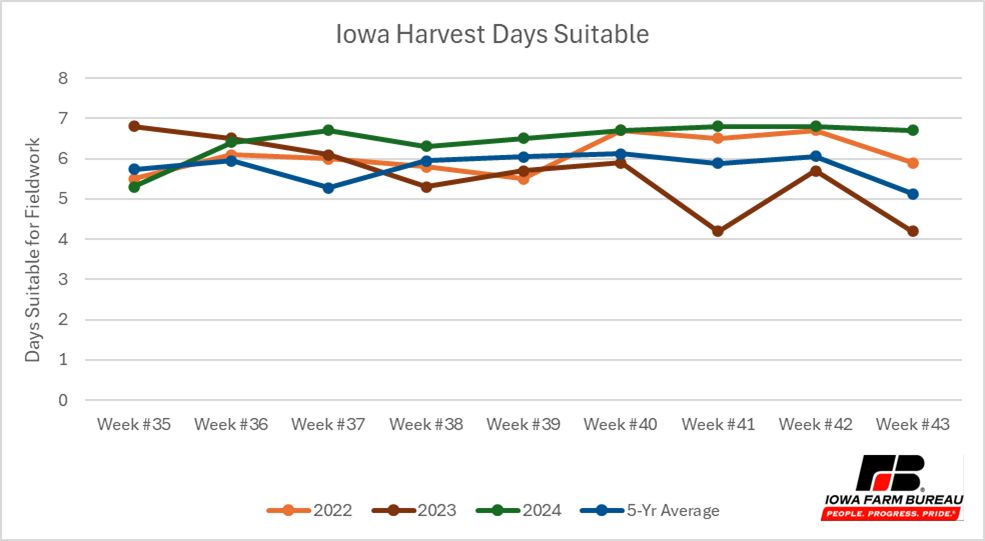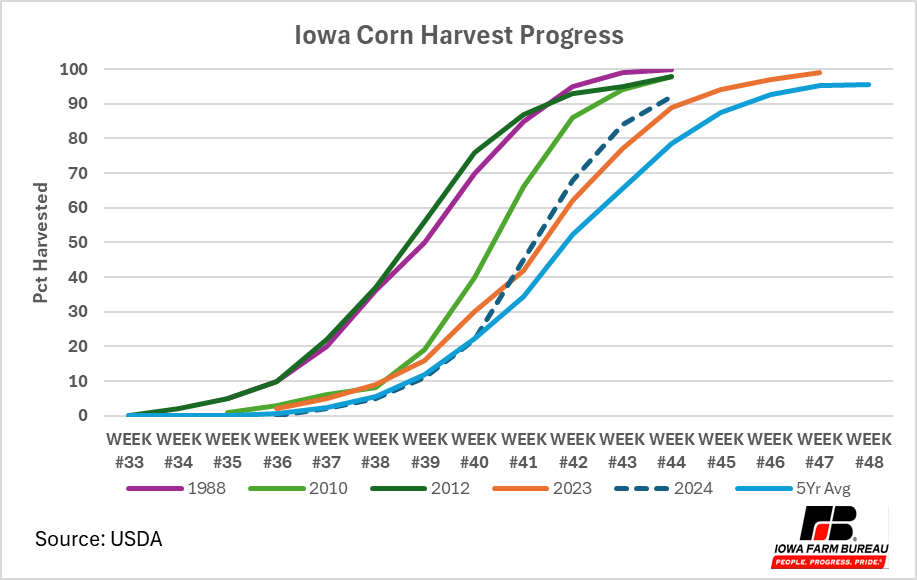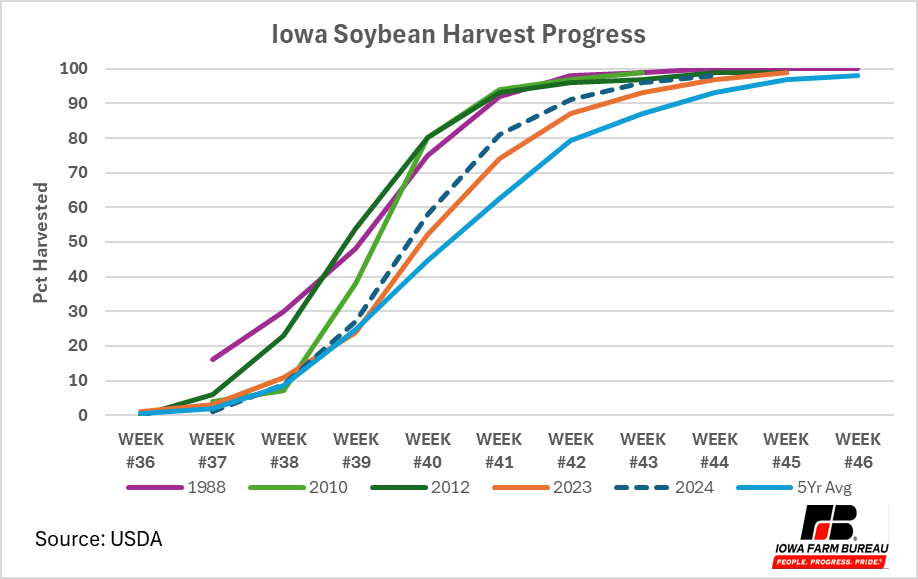Harvest Progress Report
Author
Published
11/8/2024
Harvest
This year’s harvest is near the finish line for farmers across the state following prolonged periods of dry and favorable weather conditions allowing farmers to make significant progress throughout the month of October. Dry conditions, paired with consistent warm temperatures across the state heightened fire risks and dust levels, but allowed for quick progress to be made on both corn and soybean harvests. To close out the month of October, the USDA reported 6.7 suitable days for fieldwork, consistent with the days reported in the last two weeks. The consistency in days suitable throughout harvest has allowed farmers to move at a record pace as we closed out the month. Five consecutive reporting periods rounding out September and throughout the month of October recorded above 6.5 suitable days, an unprecedented trend as shown in Figure 1.
The first of November brought precipitation and cooler temperatures across the state stalling the final push of harvest but bringing much needed moisture to the region. Some parts of Iowa received well over an inch of rain over the first weekend of the month limiting the days suitable for fieldwork to just 4.7.

Figure 1. Iowa Harvest Days Suitable
Corn
The USDA Crop Progress report for the week ending November 3 reported that 92% of the state’s corn has been harvested, nearly a week ahead of the 86% harvested at this time last year. Much of the northern part of the state has largely completed their harvest, while the south-central region is slightly behind with 77% harvested. Corn harvested in Week 43 came in at 14% moisture content, remaining steady with the 15% reported a week prior. Precipitation and moisture to start the month of November has stalled the progress on the remaining corn harvest throughout the state.
Corn harvest trends across the rest of the U.S. are closely aligned with Iowa’s pace, with 91% of the harvest being reported as complete. Iowa’s consistency in days suitable throughout harvest mirrors closely to trends in other states: Illinois recorded 7.0 and 6.6 days suitable, Nebraska recording 6.7 and 6.5, and Missouri recording 7.0 and 6.6 for the last two recording weeks of October. This stability has propelled this year’s corn harvest to outpace the 5-year average by nearly two weeks despite the drawbacks of minimal precipitation throughout the Midwest.
How does this year’s harvest compare to some other select years?

Figure 2. Iowa Corn Harvest Progress
Figure 2 shows Iowa corn harvest progress for some selected years. The drought years of 1988 and 2012 were very early and relatively fast corn harvest years. Additionally, 2010 was a very fast harvest year. 2023 shapes up as a relatively fast corn harvest year and given the level of production and total number of bushels handled, it probably ranks as one of the most efficient harvests on record.
Soybeans
Along with the considerable progress made in the corn harvest throughout the month of October in Iowa, the USDA reported 98% of the soybean crop harvested. This time last year, the USDA reported 96% of the soybeans harvested indicating that both corn and soybean harvest is, understandably, moving at a quicker pace than in recent years given the lack of precipitation and advantageous conditions throughout October. In drought years, harvest tends to start earlier than in a normal year and due to the lowered yields tends to progress faster than when there is a record amount of production to move from field to storage.

Figure 3. Iowa Soybean Harvest Progress
The U.S. soybean harvest is nearing completion with 94% of the crop harvested, up from the 89% harvested at this time in 2023. This outpaces the 5-year average of the top producing states that comes in at 85%.
Want more news on this topic? Farm Bureau members may subscribe for a free email news service, featuring the farm and rural topics that interest them most!